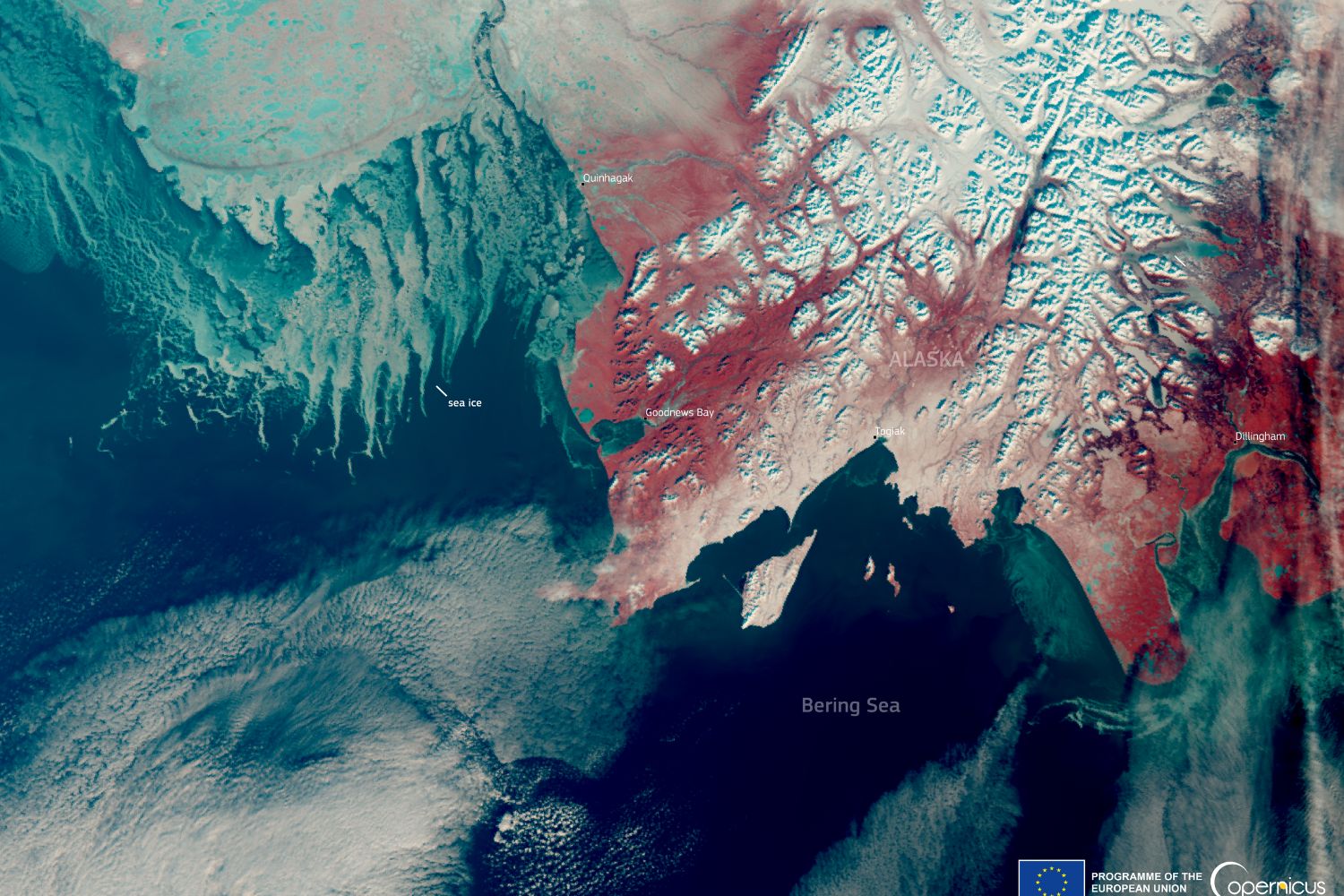The winter of 2025 marked a new record low for global sea ice extent, with alarming data from both the Arctic and Antarctic. Copernicus Sentinel-3 satellite imagery confirms a trend in the Arctic and a new phase of decline in Antarctica. What are the implications for local wildlife and for us?

@European Union, Copernicus Sentinel-3 images
A satellite image on February 15, 2025, by the Copernicus Sentinel-3 satellite reveals the breathtaking impact of global warming on the Bering Sea, off the coast of Alaska. The image, representing an unprecedented drop in sea ice, is a grim reminder of the prevailing climate crisis.
According to data from the U.S. National Snow and Ice Data Center (NSIDC) records, the overall sea ice cover in the Antarctic and Arctic fell to 6.08 million square miles in February 2025, breaking the 2023 record low.
Images from the European Union’s Copernicus Sentinel-3 satellites also clearly indicate the magnitude of the issue. In the Bering Sea, along Alaska’s coast, the melting of sea ice is evident, confirming a trend that has alarmed scientists for decades. The Arctic has experienced a steady decline in sea ice over the past decades, with late summer sea ice extent decreasing from an average of 2.7 million square miles during the 1980s to 1.74 million square miles during the 2010s.
But most troubling is the trend in Antarctica. Until the mid-2010s, Antarctic sea ice had been remarkably robust, waving its finger in the face of scientists’ predictions. Recent years have found it instead struggling through a streak of record-low extents, with 2025 almost reaching last year’s record low of 2023.
“Every year, each piece of data we collect shows that this isn’t something temporary but something more established, like we’ve seen in the Arctic.”
— Walter Meier, head researcher at NSIDC, interviewed by the BBC
The causes of this reduction are complex. Global warming, the result of climate change, has elevated temperatures around the world, warming the air and oceans. This has facilitated the melting of sea ice, particularly at Antarctica, where ice is thinner and more prone to movement. The ice has also been broken up by stronger winds, which have further added to the reduction.
The impact of this sea ice melting is catastrophic. Sea ice is a huge mirror that bounces sunlight back to space and chills the planet. Its reduction causes extra warming by the oceans, which heats up the world even more. This is “positive feedback,” which accelerates warming of the Earth.
Melting of sea ice also has a catastrophic impact on wildlife in the region. Polar bears, penguins, and other creatures rely on sea ice for their survival. Loss of their habitat threatens their existence.
Sea ice is also crucial for ocean circulation and world climate patterns. Its decline could disrupt ocean currents, with unintended consequences for the climate in other regions of the globe.
The scientific community agrees: sea ice melting is a grim warning sign of ongoing climate change.
